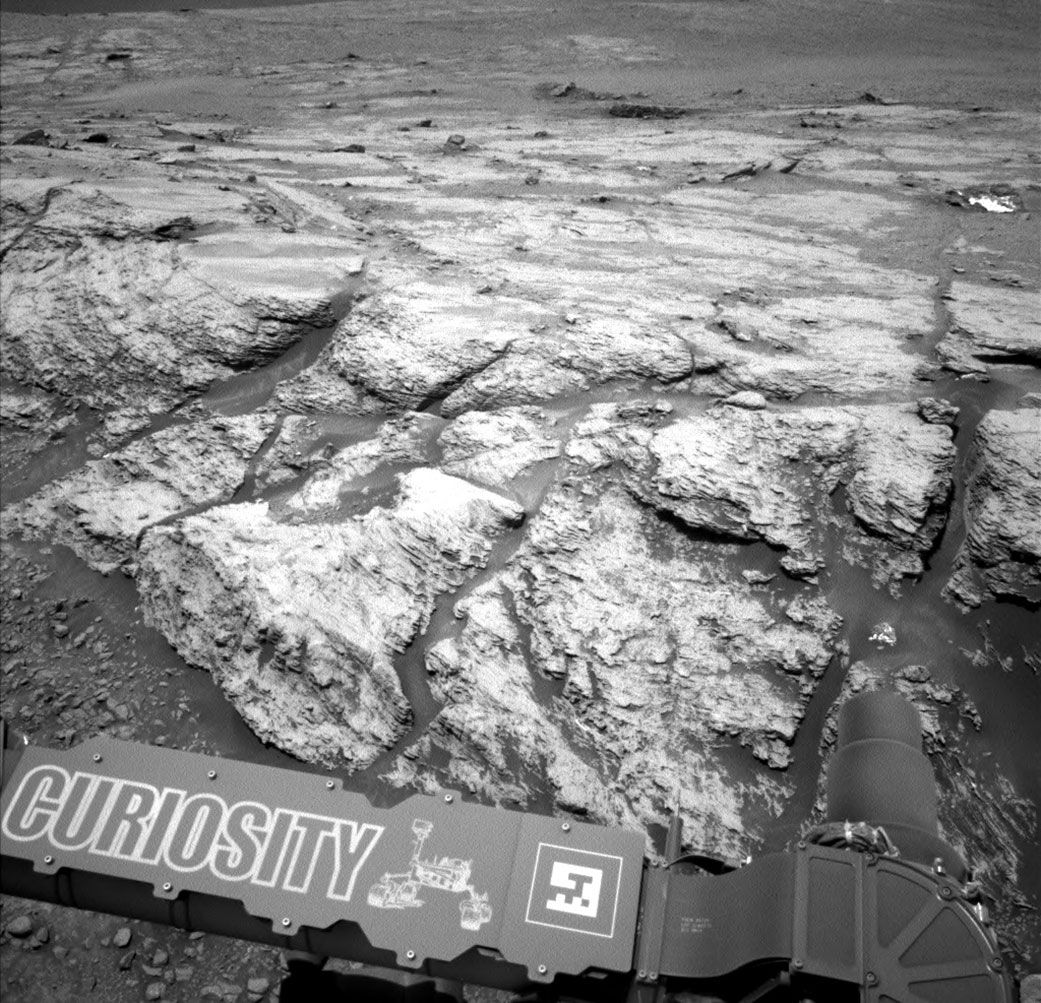Science
Related: About this forumMore Mars Methane: Curiosity Rover Spots Biggest Surge Yet
By Mike Wall 24 June 2019
The rover detected methane levels more than 30 times above normal last week.

This image was taken by the left Navcam on NASA's Curiosity Mars rover on June 18, 2019. It shows part of "Teal Ridge," which the rover has been studying within a region called the "clay-bearing unit."
(Image: © NASA/JPL-Caltech)
NASA's Curiosity rover has sniffed out another surge of the potentially life-indicating gas methane on Mars, and this one is the biggest yet.
The six-wheeled robot detected methane levels around 21 parts per billion per unit volume (ppbv) last week inside the 96-mile-wide (154 kilometers) Gale Crater, NASA officials announced yesterday (June 23). That's far higher than the normal background concentration at Gale, which Curiosity has determined ranges seasonally from about 0.24 ppbv to 0.65 ppbv.
The new result is exciting, because the vast majority of methane in Earth's air is generated by microbes and other organisms. But we can't assume Martians were involved. Methane can also be produced abiotically — via the reaction of hot water with certain types of rock, for example.
"With our current measurements, we have no way of telling if the methane source is biology or geology, or even ancient or modern," Paul Mahaffy, of NASA's Goddard Space Flight Center in Greenbelt, Maryland, said in a statement. Mahaffy is principal investigator of Curiosity's Sample Analysis at Mars (SAM) instrument, which detected the recent surge.
More:
https://www.space.com/amp/curiosity-mars-rover-highest-levels-methane.html?utm_source=notification
JustFiveMoreMinutes
(2,133 posts)shraby
(21,946 posts)It would have leaked out into space over time, but something is replacing what is lost.
cstanleytech
(26,318 posts)Stryst
(714 posts)Because it indicates underground heat sources. So maybe biology, maybe Mars isn't as geologically dead as we think.
eppur_se_muova
(36,281 posts)Although mass spectrometers are routinely included in planetary probes, and MS was probably used to identify methane, I'm not sure if the precision of these stripped-down, ruggedized, automated instruments would be sufficient for the job. Also, there needs to be some standards established first -- meaning comparison against samples of carbonate rocks *on Mars*, for example. I suspect someone's already working on that now, though.